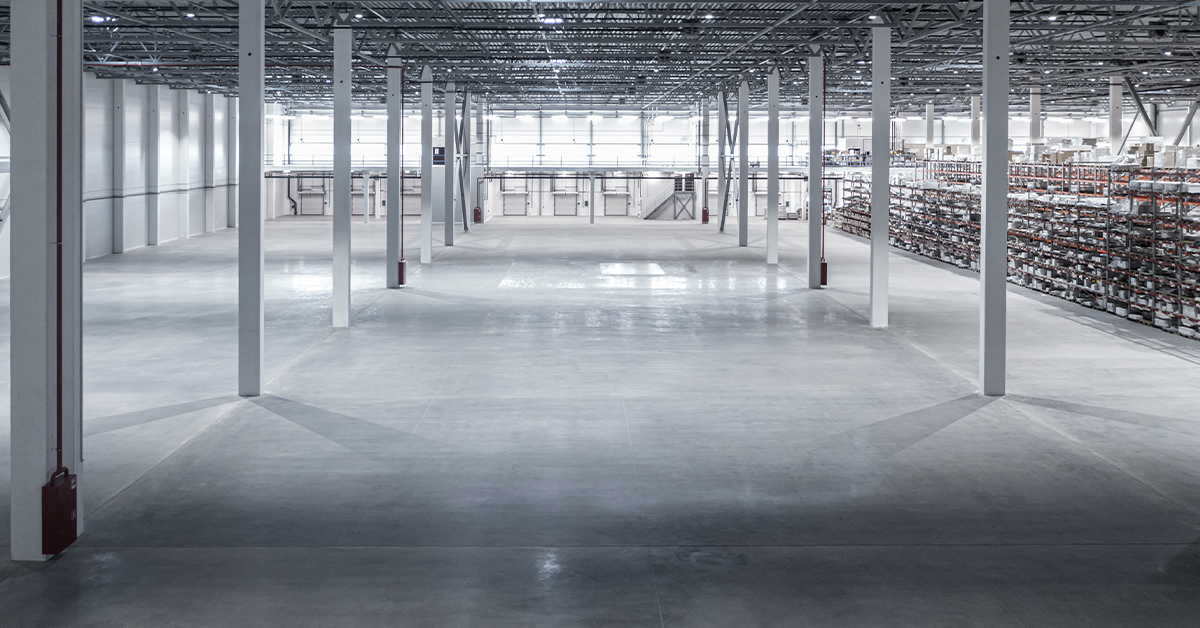In the field of construction and architecture, the choice of materials is crucial for ensuring the robustness, longevity, and excellence of various structures. A standout material that has seen a significant rise in usage is commercial concrete. Now, you might wonder, what constitutes commercial versus residential concrete and what accounts for its extensive use in the realm of commercial construction? Drawing from our 25+ year journey as a commercial concrete contractor, we’ll share insights into the workings of commercial concrete construction. We’ll delve into its composition, applications, and the advantages it offers.
Understanding the Basics: What is Commercial Concrete?
Commercial concrete, often referred to simply as “concrete,” is a composite material composed of three primary components: cement, aggregates like sand and gravel, and water. These elements are carefully mixed in precise proportions to create a paste-like substance that can be molded into various shapes and forms. Once all of this mixture is complete, it hardens. The final product becomes a robust and versatile construction material known for its exceptional strength and durability.
The Composition of Commercial Concrete
Before we dive deeper into its applications, let’s take a closer look at the composition of concrete:
- Cement: Cement is the binding agent in concrete. It reacts with water to form a chemical bond that holds the concrete mixture together. Portland cement is the most commonly used type of cement in concrete.
- Aggregates: Aggregates, including sand, gravel, and crushed stone, make up the bulk of the concrete mixture. These materials provide stability and reduce shrinkage during the curing process.
- Water: Water is essential for the chemical reaction that hardens the concrete. The right amount of water is crucial to achieve the desired strength and workability.
Applications of Commercial Concrete
Professional concrete’s versatility is evident in its wide range of applications across the construction industry. Here are some key areas where industrial concrete is commonly used:
-
Building Foundations
Concrete foundations form the solid base on which industrial buildings stand. It provides stability and prevents settling or shifting, ensuring the structural integrity of the entire edifice of commercial spaces, office buildings, and warehouses. The advantage of concrete installation in slabs is a popular commercial technique.
-
Roads and Pavements
The durability and high-performance of industrial concrete makes it the preferred choice for constructing highways, streets, sidewalks, and parking lots. It can withstand heavy traffic and harsh weather conditions.
-
Structural Components
Concrete is used to create beams, columns, and other structural elements that support buildings and bridges. With Tilt-Wall Structures, you can even create an entire building. Its compressive strength makes it ideal for these critical applications.
-
Residential Construction
In addition to commercial projects, concrete is extensively used in residential construction, including the construction of homes and apartment complexes.
-
Decorative Concrete
Decorative concrete or form place finishes can be colored, stamped, and polished to create aesthetically pleasing surfaces for both indoor and outdoor spaces, enhancing the overall appeal of a structure.
Types of Commercial Concrete Flooring
Commercial concrete flooring comes in several types, each tailored to specific needs and preferences.
Polished Concrete Flooring
Polished concrete flooring is known for its sleek and reflective surface, making it a popular choice for modern and industrial spaces.
Stamped Concrete Flooring
Stamped concrete flooring offers a decorative touch, with patterns and textures resembling natural materials like stone or wood.
Epoxy Concrete Flooring
Epoxy flooring provides a seamless, chemical-resistant surface suitable for commercial kitchens and laboratories.
Stained Concrete Flooring
Stained concrete flooring adds vibrant colors to concrete surfaces, enhancing aesthetics.
Exposed Aggregate Concrete Flooring
For outdoor areas, exposed aggregate concrete flooring offers a textured and slip-resistant finish.
With these options, commercial concrete flooring can be customized to meet both functional and aesthetic requirements, making it a versatile choice for a range of commercial settings.
Pros and Cons of Commercial Concrete
Before making any construction decisions, it’s essential to weigh the advantages and disadvantages of commercial concrete. In the table below, we’ve outlined the key pros and cons to help you make an informed choice for your building projects.
| Pros | Cons |
| Exceptional Strength | High Initial Installation Costs |
| Durability | Susceptible to Cracking over Time |
| Versatility | Heavy Weight may Require Strong Foundations |
| Fire Resistance | Requires Skilled Labor for Proper Mixing |
| Low Maintenance | Environmental Impact during Production |
| Long Lifespan | Limited Aesthetic Options |
| Sustainability (with practices) | Prone to Staining and Surface Damage |
| High Load-Bearing Capacity | Can Be Cold and Uncomfortable to Walk On |
Conclusion
In conclusion, commercial concrete is a fundamental building material that has revolutionized the construction industry. Its exceptional strength, durability, and versatility have made it an indispensable component of countless structures worldwide. Whether it’s the foundation of a skyscraper or the pavement of a neighborhood street, contractor’s concrete plays a vital role in shaping our built environment.
If you’re involved in construction or planning a project that requires the use of structural concrete, it’s crucial to understand its properties and benefits. By harnessing the power of this remarkable material, you can ensure the longevity and reliability of your construction endeavors.
If you’re looking for the best commercial concrete company in Texas, contact us today to get a quote!
Frequently Asked Questions
Q1: Is commercial concrete the same as regular concrete?
Commercial concrete is a specific type of concrete commonly used in larger-scale construction projects, whereas regular concrete can refer to any concrete mix used in various applications, making them distinct in terms of purpose and scale.
Q2: How thick is a concrete foundation for a commercial building?
The thickness of a concrete foundation for a commercial building can vary widely depending on factors such as the building’s size, load-bearing requirements, local building codes, and soil conditions. Typically, commercial building foundations range from 6 to 12 inches (15 to 30 centimeters) in thickness, but they can be thicker in cases of heavier loads or specific engineering needs. It’s essential to consult with a structural engineer or architect to determine the appropriate thickness for your specific project.
Q3: What grade of concrete is used in Commercial Buildings?
The grade of concrete used in commercial construction projects typically falls within the range of 3,000 to 4,000 pounds per square inch (PSI), although higher-strength concrete, such as 4,000 to 5,000 PSI, may be employed for structures with greater load-bearing requirements. The specific grade chosen depends on factors like building design, intended use, and adherence to local building codes.
Q4: What factors affect the curing time of commercial concrete?
The curing time of industrial concrete is influenced primarily by environmental conditions such as temperature and humidity, as well as the specific mix composition, including water-to-cement ratio and the use of additives or admixtures. Higher temperatures and lower humidity levels can accelerate the curing process, while certain additives can be used to either speed up or slow down the cure time to meet specific project needs.
Q5: Can commercial concrete be used for decorative purposes indoors?
Commercial and industrial concrete can indeed be utilized for decorative purposes indoors, offering a versatile and durable option for flooring, countertops, and other interior design elements. Its ability to be stained, polished, and textured allows for a wide range of aesthetic finishes, making it a popular choice for modern and industrial-style interiors.




